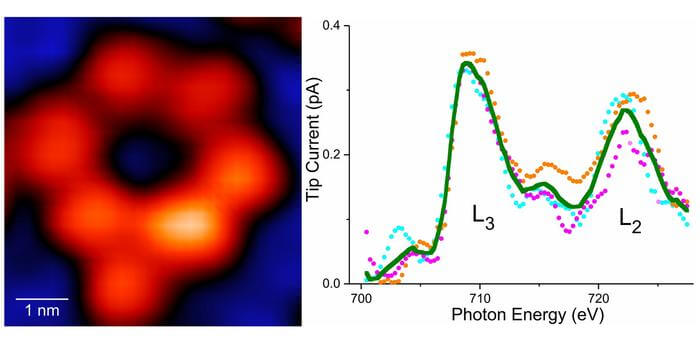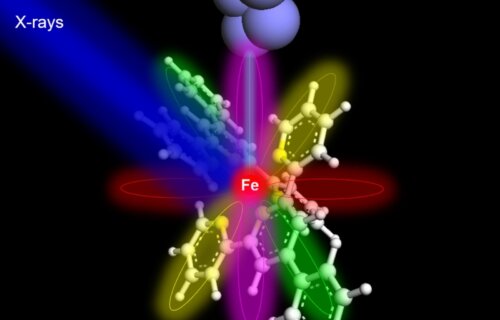ATHENS, Ohio — For the first time, scientists have X-rayed a single atom, a breakthrough that experts believe could “revolutionize the world.” Researchers in Ohio assert this discovery could pave the way for major medical advancements and herald the arrival of superfast quantum computers and smartphone applications that could replace the current World Wide Web.
Atoms are the smallest units of a substance that remain intact after chemical reactions. To put their size in perspective, there are as many atoms in a golf ball as there would be golf balls packed into the Earth. This groundbreaking achievement, now enabling us to analyze an atom’s constituents to an unparalleled degree, is regarded as the “holy grail” of physics.
“Atoms can be routinely imaged with scanning probe microscopes, but without X-rays, their composition remains unknown,” says Professor Saw Wai Hla from Ohio University, the lead author of the study, in a media release. “Now, we can precisely identify the type and chemical state of a specific atom, one atom at a time. Once we can do that, we can break down materials to their ultimate limit of a single atom. This will greatly influence environmental and medical sciences, potentially leading to cures that could drastically impact humanity. This discovery will transform the world.”
Since Wilhelm Röntgen discovered X-rays in 1895, they’ve become ubiquitous in many areas, including medical examinations and airport security screenings. An important scientific application of X-rays is identifying the type of materials in a sample. Over time, thanks to the development of synchrotron X-ray sources and new instruments, the amount of material required for X-ray detection has been significantly reduced.

(credit: Saw-Wai Hla)
The state-of-the-art synchrotron scanners can X-ray an attogram – about 10,000 atoms or more. The signal produced by a single atom is so faint that conventional detectors are inadequate.
This monumental achievement has been a long-standing dream, says Prof. Hla. It was made possible through a custom-built synchrotron instrument at Argonne National Laboratory in Illinois. The SX-STM technique (synchrotron X-ray scanning tunneling microscopy) was used to collect excited electrons, particles orbiting protons and neutrons in an atom. These spectrums are like fingerprints, each one unique, allowing precise identification of the atom.
“The technique used, and concept proven in this study, broke new ground in X-ray science and nanoscale studies. It could revolutionize research and give birth to new technologies in quantum information and the detection of trace elements in environmental and medical research,” explains first author Tolulope Michael Ajayi, a Ph.D. student at Ohio University.
A key objective for the team was to examine the environmental impact on a single rare-earth atom. Rare-earth materials, used in everyday devices such as cell phones, computers, and televisions, are crucial for the creation and advancement of technology.
“We have detected the chemical states of individual atoms as well. The terbium atom, a rare-earth metal, is rather isolated and does not change its chemical state, while the iron atom strongly interacts with its surroundings,” says Prof. Hla.
With this breakthrough, scientists can now identify not only the type of element but also its chemical state. This new method, called “X-ray excited resonance tunneling or X-ERT,” allows them to determine the orientation of a single molecule’s orbitals on a material surface using synchrotron X-rays.
“This achievement connects synchrotron X-rays with the quantum tunneling process to detect X-ray signatures of individual atoms and opens many exciting research directions, including the research on quantum and spin (magnetic) properties of just one atom using synchrotron X-rays,” concludes Hla.
The findings are published in the journal Nature.
You might also be interested in:
- Plants help unlock the secrets of the mysterious fifth state of matter
- Quantum biology on horizon? How futuristic physics theory could revolutionize life sciences
- ‘Quantum light’ breakthrough could revolutionize science at the atomic level
South West News Service writer Mark Waghorn contributed to this report.


MANKIND is getting a little (TOO BIG FOR HIS BRITCHES) and Jesus will soon appear to put an end to such nonsense.